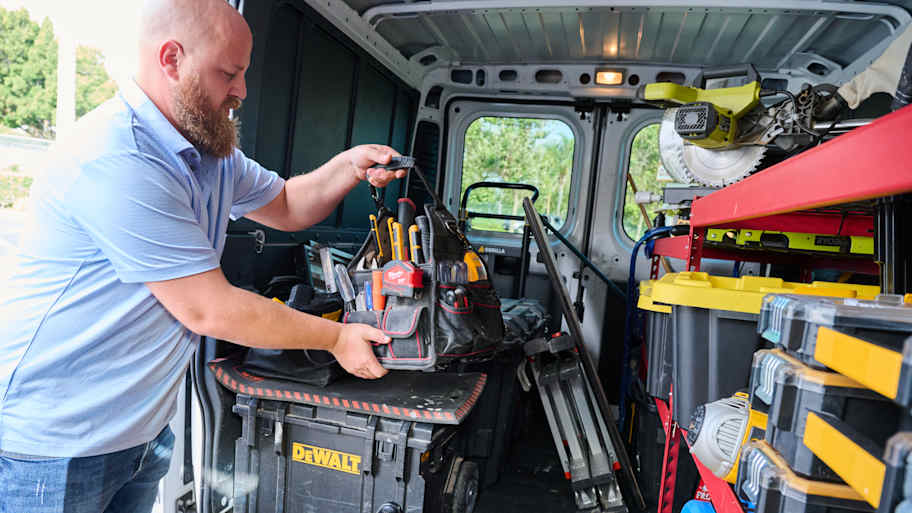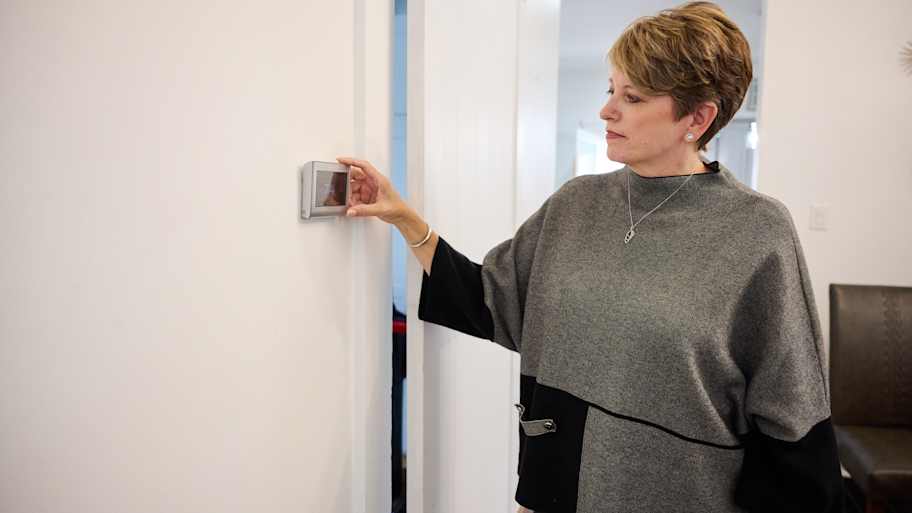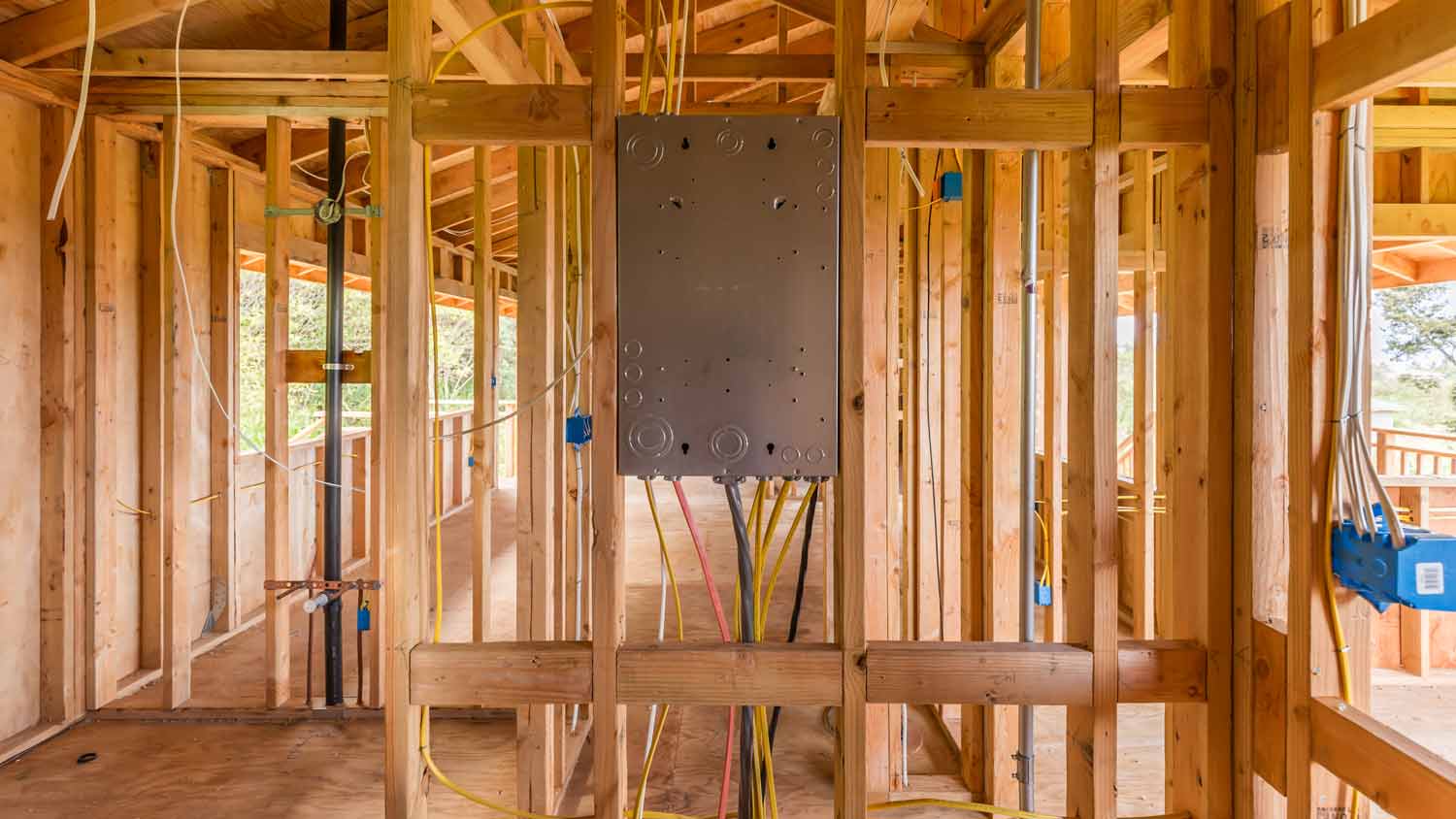How to Install a GFCI Outlet in Your Home Safely
Reduce your risk of electrical shock by installing GFCI outlets in your kitchen and bathrooms


- Voltage tester
- Phillips head screwdriver
- Flat head screwdriver
- Wire cutter
- Wire stripper or electrician’s multi-tool
- GFCI outlet receptacle
- Electrical tape (optional)
- Wall plate (optional)
A safe home is a happy home, and taking precautions like installing GFCI outlets, can help you enjoy your house with more peace of mind.
GFCI stands for ground fault circuit interrupter. If water splashes onto your outlet, the outlet will detect a fault, and the power will immediately shut off at the outlet. This feature prevents an outlet from producing sparks that could lead to an electrical fire. It’s a good idea to install GFCI outlets in your home where electrical outlets are close to water, like in kitchens and bathrooms.
If this sounds like your next weekend project, use this step-by-step guide to learn how to install a GFCI outlet.
Prepping to Wire a GFCI Outlet
Safety is of the utmost importance for any project involving electricity, so taking precautions is key. Only complete this project if you know basic electrical safety tips and have some expertise working with low-voltage electricity. If you don’t have this type of experience, we highly recommend hiring a local electrician to replace your outlet with a GFCI receptacle.
This GFCI outlet wiring process assumes you have an existing electrical outlet installed, including the electrical box, wiring, and wall plate. If that’s not the case, you definitely need to call in a pro.
Turn Off Power at the Circuit Breaker
 Photo: karenfoleyphoto / Adobe Stock
Photo: karenfoleyphoto / Adobe StockThis first step is crucial for safety: Turn off the power to the outlet you will be wiring at your circuit breaker. Once you have turned off the breaker, verify there is no current to the outlet by using a multimeter device or voltage tester.
Remove the Existing Outlet
 Photo: PhotoAlto / Odilon Dimier / PhotoAlto Agency RF Collections / Getty Images
Photo: PhotoAlto / Odilon Dimier / PhotoAlto Agency RF Collections / Getty ImagesRemove the existing wall plate with the appropriate screwdriver. If you can see the screw, unscrew it and pull the outlet plate off. If you’re having trouble removing the plate, loosen the top with the flathead screwdriver until the plate comes off. If you have a screwless outlet plate, you can use a flathead screwdriver to gently pry off the plate via one of the catches at the top.
Carefully pull the existing outlet receptacle out of the electrical box. Disconnect all attached wires with a wire cutter—clip the wires as close to the outlet as you can to preserve the length.
Carefully Identify Each Wire
 Photo: osmar01 / Adobe Stock
Photo: osmar01 / Adobe StockThis step requires working around live electrical power to identify the hot wires—do not proceed unless you have the electrical experience required. Separate the wires so they are not touching each other, and turn back on the circuit breaker that powers the outlet. Do not touch the live wires with your hands; you can wear insulated electrical gloves for added protection, but still, be sure not to touch the live wires.
With a voltage tester or multimeter, use the red probe to test each black wire for a current. The black wire that lights up the tester is the hot wire or “line” wire—keep track of this wire. Repeat this step to determine which white or neutral wire is the “line” wire using the black probe. You’ll want to keep track of that one too. The black and white wires without a current are known as “load” wires. Turn the circuit breaker back off to remove power from the outlet. Use electrical tape to mark the “line” wires so you do not forget when wiring the outlet.
Strip and Connect Wires to GFCI Receptacle
 Photo: wattanaphob / iStock / Getty Images Plus / Getty Images
Photo: wattanaphob / iStock / Getty Images Plus / Getty ImagesMake sure each of the wires is straight—use needle-nose pliers to bend the wire if needed. Next, strip the insulation coating from each wire with a wire stripper so that approximately ¾inch of the interior copper conductor wire is exposed.
You will now connect each wire to the appropriate stab-in terminal on the back of the GFCI receptacle. If your GFCI receptacle has terminal screws, unscrew each one until it is difficult to turn the screw in order to open up the stab-in holes.
First, connect the line wires. Connect the black line hot wire to the brass screw terminal marked “line” and connect the white line neutral to the silver screw terminal market “line.” Tighten the terminal screw after connecting.
Next, connect the load wires. Connect the black load wire to the brass screw terminal marked “load” and connect the white load to the silver terminal marked “load.” Tighten the terminal screw after connecting.
Finally, connect the bare ground wire to the green screw at the bottom of the receptacle and tighten the screw.
Secure the GFCI into the Electrical Box
 Photo: ungvar / Adobe Stock
Photo: ungvar / Adobe StockCarefully place the wired GFCI outlet back into the electrical wall box—screw in the box and the wall plate.
Turn your circuit breaker back on to test the outlet. Press the “reset” button on your GFCI outlet and determine if there is any power to the outlet by plugging in a device.
Put the Wall Plate Back On
If you’re replacing a standard outlet with a GFCI outlet, the old wall plate covering might not fit anymore. When shopping for your new GFCI outlet, check if it comes with a wall plate. Otherwise, you might need to pick one up before making the swap.
If you have the right wall plate, this step is a cinch. Simply grab your screwdriver and fit the plate securely over the outlet by tightening the included mounting screws.
Turn the Power Back On and Test
Now you’re ready to turn the power back on and check that the GFCI outlet is fully functional. Flip the main breaker or the circuit breaker you switched off at the beginning of the process back on. Then follow these steps to test your GFCI outlet:
Pick a small appliance or device, like a lamp, to plug into the outlet.
Flip the switch and turn on the device.
Press the “test” button in the center of the GFCI outlet.
If the outlet is working properly, the device should switch off straight away.
Then press the “reset” GFCI electrical outlet button.
The light should come back on, and you have peace of mind the GFCI protection is doing its job.
If the device doesn’t switch off at the TEST phase or turn back on at the RESET phase, your electrical outlet is not working properly, and it might be time to call an electrician.
Don’t forget to test the GFCI outlet once a month to ensure it still offers protection.
DIY vs. Hiring a Pro
If you choose to hire a professional, the cost to install a GFCI outlet will be between $130 and $300, or around $210 on average. However, by learning how to install a GFCI outlet yourself, it will cost you less than $25—just the cost of the GFCI outlet receptacle.
While it is less expensive to install a GFCI outlet yourself, hiring an electrician will give you peace of mind with this low-voltage electrical project. Any mistakes can lead to injury and damage to your home. A professional electrician will understand all of the risks involved when working with electricity and how to complete your project safely.
Brionna Farney contributed to this piece.
Frequently Asked Questions
A GFCI outlet should be installed if an outlet is in close proximity to water or another liquid source. The National Electrical Code (NEC) requires GFCI outlets to be installed in all wet or damp locations.
You should install GFCI outlets in wet or damp locations where you may splash them with water or another liquid. Therefore, you should use GFCI outlets in kitchens, bathrooms, laundry rooms, basements, garages, and outdoors.
Yes, you can put a GFCI outlet in almost any electrical outlet location. As long as the outlet is wired correctly back to a circuit breaker, you can likely replace the existing outlet with a GFCI outlet.
GFCIs and ground fault interrupters (GFI) are the same device under different names. The terms are interchangeable, and they refer to the same tool.
The cost to hire a pro to install a GFCI outlet will be between $130 and $300, or around $210 on average. However, you can save money by installing it yourself, costing $25 or less. Keep in mind that it’s not an easy DIY task and requires specialized knowledge of electrical systems.
You should replace GFCI outlets every seven to 10 years. However, some GFCI outlets fail after only five years.



.jpg?impolicy=leadImage)

- Home Generator Repair
- Lamp Repair
- Electric Repair
- Generator Installation
- TV Antenna Services
- Emergency Electricians
- Commercial Electricians
- Attic Fan Installation
- Attic Fan Repair
- Exhaust Fan Installation
- Electric Inspectors
- Subcontractors
- Electrical Construction
- EV Charger Installer
- Chandelier Installation
- Doorbell Installation
- Bathroom Fan Installation
- Ring Installers
- Electrical Panel Upgrade















